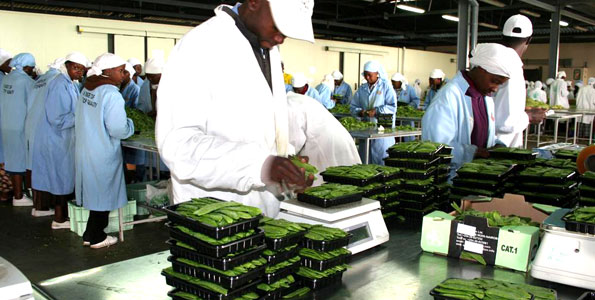In the recent past, Kenya has faced scrutiny of her horticultural produce to the European Union (EU) market, specifically on beans with pods, peas with pods, roses, karella (bitter guard) and chillies.
In 2017 for instance, Kenya’s fresh produce to the EU was intercepted 29 times due to harmful organisms in a crackdown that makes it difficult for Kenya to be removed from the European Union’s quality watch list.
According to Horticultural Crops Development Authority (HCDA), the industry regulator, 17 out of the interceptions involved capsicum due to the False Codling Moth (FCM).
The EU has placed Kenya on the radar as one of the countries with 10 per cent increased Maximum Residual Levels (MRLs), which are the set legal levels of concentration of pesticide residues in or on food.
Related
European Union to fund over 15,000 coast farmers to grow cashew nuts and sesame (simsim)
European Union to provide Sh1.2bn to boost regional fish farming industry
EU launches new project to improve women’s fortune in agribusiness in Nairobi

A worker at the Horticultural Crops Development Authority depot weighs snow peas for export. Photo/East African.
Currently, the produce is subject to checks of exceedances of pesticides residues and presence of harmful organisms (pests) before entry into the EU.
The Kenya Plant Health Inspectorate Services (KEPHIS) notes that while the country has made great strides in ensuring that its produce meets requirements of the trading partners, exporters are advised to adhere to certain standards when exporting produce to ensure compliance and entry into the EU market.
For fruits and vegetables, the use of dimeothate, omethoate and chlorpyrifos is not allowed. For other pesticides, farmers and exporters are advised to observe pre-harvest intervals but this excludes the first day of spraying.
Before spraying, read the label so as to understand how to use the pesticide. Farmers who may not understand the instructions can visit the nearest KEPHIS offices or the Pest Control Products Board.
As for plant health, the EU has set limits for contaminants such as nitrate in spinach and lettuce. The contaminants may have been added to the food accidentally during the packaging process and might destroy the quality of the produce. Exporters also have to check for presence of lead and mercury in fruits such as avocados.
In this, food exported to the EU market must meet the legislation on food labeling. Cartons of fruits or vegetables must mention the name and address of the packer and dispatchers, the country of origin, the name of the produce, the class and size and lot number for traceability.
Foods to the EU are also subjected to official controls. This includes documentary checks, identity checks, and physical checks.
On documentary checks, the exporter has to proof of origin of his produce with a bill of lading, phytosanitary certificate, packing list and custom documentation. The checks are done at the point of entry into the EU.
Overall marketed production increased by 8.2 per cent from Sh413.2bn in 2016 to Sh446.9bn in 2017 with marketed crops accounting for 69.7 per cent of the overall marketed agricultural production according to the Economic Survey 2018.
The value of horticulture exports increased by 13.6 per cent from Sh101.5bn in 2016 to Sh115.3bn in 2017. Cut flowers accounted for 71.3 per cent of the value of horticulture exports. Earnings from marketed maize increased from Sh7.9bn in 2016 to Sh8.5bn in 2017. Similarly, the value of marketed tea increased by 15.7 per cent from KSh 116.5 billion in 2016 to Sh134.8bn in 2017.
















Comments powered by CComment